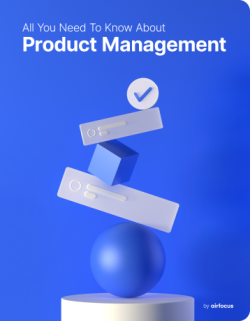Buy-a-Feature
What is Buy-a-feature?
Definition of Buy-a-feature
Buy-a-feature is an approach to prioritizing a product’s development in which the product team works directly with a group of customers or other stakeholders to learn which features they value most.
Buy-a-feature has a game format whereby stakeholders are given a fixed amount of play money to spend on their preferred features — each of which is priced based on its estimated development costs.
Download Now: Get our eBook on Mastering Prioritization
Product managers commonly use buy-a-feature to directly engage stakeholders with their product and to prioritize features based on their expected value return, effectively shaping the product according to collective needs.
Why is buy-a-feature important?
Product managers often fall into the trap of thinking that all customers want the same things, but that couldn’t be further from the truth. If you were to work with customers one-on-one and present them with a set of options, you would likely receive a range of different preferences and be left with no clear idea of how to prioritize them.
By engaging customers or stakeholders as a group, and giving them a limited amount of resources, you allow them to work collectively to prioritize their ideas. This encourages detailed conversations about specific features, which enhances your understanding of what your customers really want.
As a result, you can work to develop your product in line with these needs and create something customers will truly value and stay loyal too, ultimately fuelling a more successful business.
How to play the buy-a-feature game
Buy-a-feature can take many forms, but it’s generally best to conduct the activity in-person rather than online. As discussed, the conversations between participants are crucial to understanding their decision-making process, and these tend to be inhibited in virtual communications.
The game involves four main steps.
1. Prepare your features
First, you need a list of product features. These will differ depending on the type of product you’re developing, and although the framework is called buy-a-feature, your list could include product updates like bug fixes, user flow changes, or performance enhancements. However, it is a good idea to only select the features which you need feedback on to keep the activity straightforward.
You will also need to assign a price to all items on the list, which should be based on relative development costs. For instance, give more complex features a higher price tag as they will require more money, time, and effort to implement.
2. Give participants a budget
Once you’ve decided on your list of features and assembled your participants, it’s time to give them a budget. This step determines how accurate the results will be: too much money and participants won’t think twice about the features they buy, too little and they won’t be able to buy the features they need. A good rule is to provide enough money to buy half of the features, as it forces participants to consider those they want the most.
You will need to select some kind of physical “money”. Whether it’s poker chips, Monopoly money, or jelly beans, choose something other than real currency (e.g. pounds or dollars), as you don’t want participants getting too literal about actual costs.
3. Observe as participants play
This is the most important stage in the game, where you uncover the group’s priorities. Their interactions and discussions will provide vital insights into what aspects of your product are deemed most important by your market.
To find out why participants value certain things, it’s a good idea for you and/or your product team to play the role of the shopkeeper. This involves selling the features, answering any questions, and uncovering the thought processes behind participants’ purchases.
The game continues until all money has been spent, or until all the features players want have been purchased. It’s important to outline that it’s okay to have money left over at the end, as you don’t want people buying features just to get rid of their unspent cash.
4. Review the purchases
Once the game is over, you can get down to the nitty-gritty. This stage involves participants talking you through their decisions, both individually and as a group, to discover deeper insights about your market’s needs.
Why did they choose one feature over another? Why did those two participants pool their money together to buy your most expensive feature? Why did they discard your cheapest feature? These are all vital talking points which will highlight how customers really feel about your product features: good and bad.
When to use buy-a-feature to prioritize tasks
Buy-a-feature is an incredibly valuable prioritization tool when it comes to refining a product.
Whether your team needs to cut down their lengthy feature wish list or you need to discover the real desires of your target market, the game will help you to identify which features will entice customers to purchase your product and which are merely wasting money.
If you feel out-of-touch with your key stakeholders, the framework can be an effective way to improve transparency. Likewise, by showing the limited resources available and putting them in perspective, customers can begin to understand why sometimes it may be difficult for brands to offer everything at once.
Furthermore, buy-a-feature is a good option if you’ve already exhausted other types of market research to no real effect. Be it a failed customer survey where the responses showed no correlation or an online poll that was hounded by trolls, generating accurate, representative samples is increasingly difficult in today’s dog-eat-dog world. But buy-a-feature does this reliably and with limited resources.
General FAQ

Glossary categories
Experience the new way of doing product management

Experience the new way of doing product management







